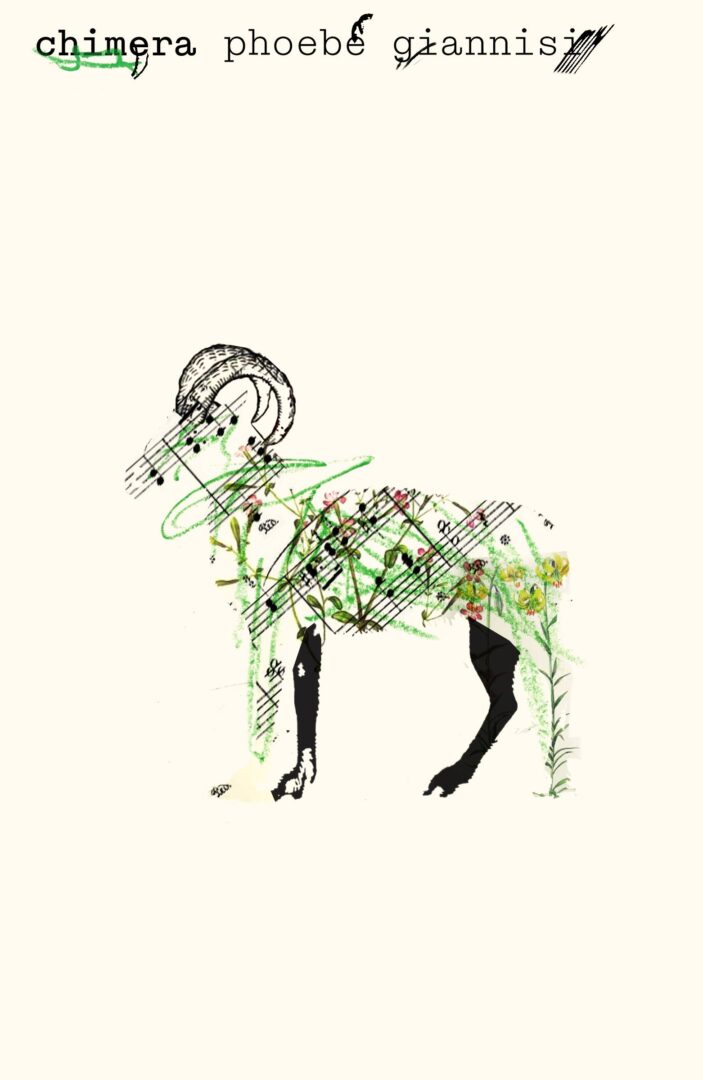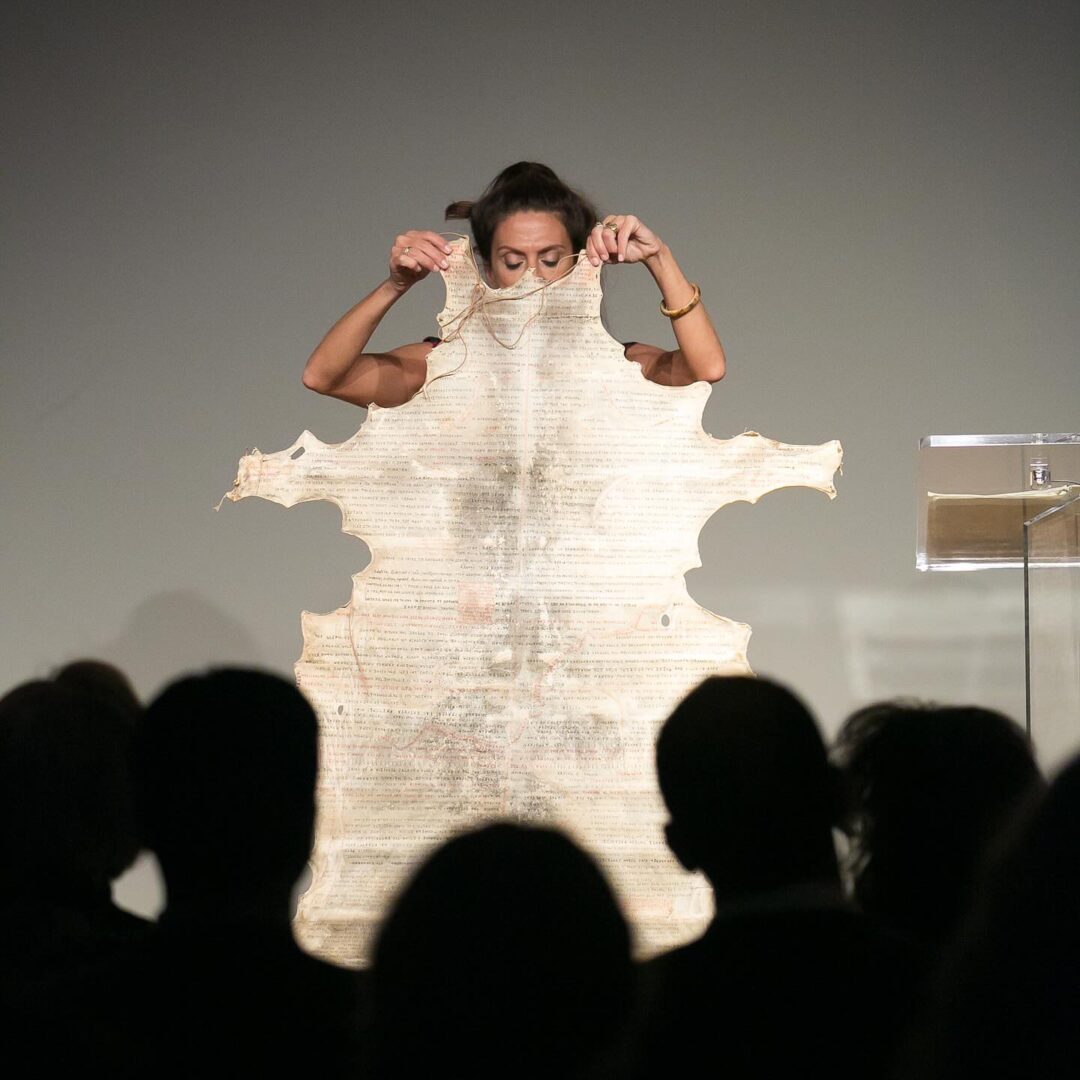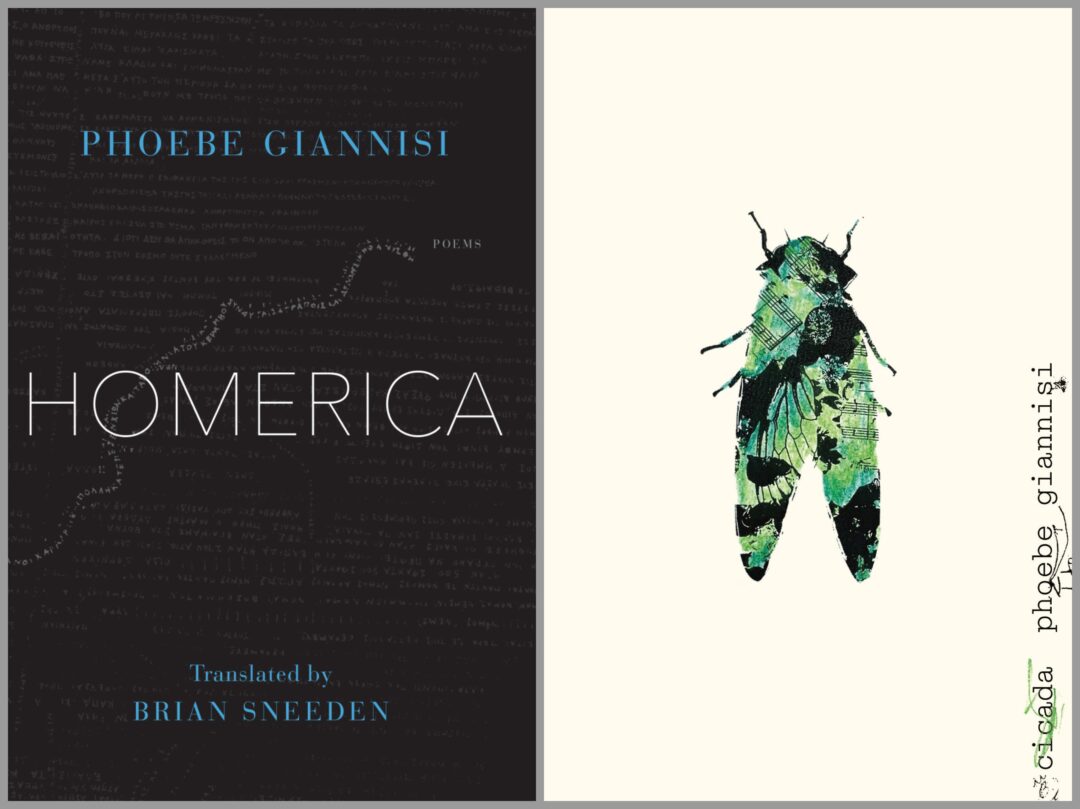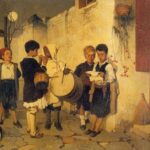Chimera in ancient Greek is a composite being, a creature where different species meet inside one body as various bodily parts. But the original meaning of the word, as we already find it inside the Homeric Epics is the female goat.

Recently published in English (New Directions, 2024) and masterfully translated by Brian Sneeden, Chimera by Greek poet Phoebe Giannisi lays out her vision for a chimeric poetics, poetics of assemblage that are both informed by the human and the non-human, where poetry blends with writing, myth, orality, field recordings, state archives, and ancient texts. The book proposes a kind of chimeric polyphonic poetry, a female version of the etymology of the word tragedy, aegodia, a multiple poetic object that brings together different kinds of poetic materials inside one multiple text body.
The center of Chimera engages with a three-year field research project on the goat-herding practices of a community of Vlachs, a people of Northern Greece and the Southern Balkans who speak their own language and practice transhumance. Through poetry and fieldwork, the mytho-historical connection between metamorphosis and utterance takes form in what the Greek newspaper Kathimerini calls “a bold achievement….a studio wherein poems and other texts, other voices, become exhibited.”.
Chimera forms the second part of Phoebe’s Giannisi work on ancient Greek animal-poetic identities, after her project and poetic book Tettix (2012). Nomad shepherds, transhumance, geography, music. But also power and control, motherhood, the female beast and the sovereign. “Chimera is about grazing and fields, animals and humans. It is also about beginnings, language, the self and the individual and the collective, ecology, the history of science, motherhood, theater, technology, myth, migration, the ancient past and the mysterious present,” writes Fani Avramopoulou in her review of the book. “The chimera, through its many meanings and the associative leaps they invite, generates its own linguistic and mythic orbit. These multiplicities and movements – across land, time, body, and voice – become Chimera’s central organizing logic, crossing into and out of each other to produce a hybrid text so finely woven that it’s impossible to distinguish its many threads.”

In the words of writer Ricardo Jaramillo, “In the center of Giannisi’s poetic frame, one encounters a serious and glimmering inquiry into the human-animal relationship. And yet I’m moved most of all by the stray moments of this book, the happenings at the frame’s margin, the book’s momentary lapses into confession, philosophy, and phantasmagoria. By all of Giannisi’s lyric shrapnel. […] This book, at its best: a many-mouthed poetic speaker with a wild imaginative sense. And, behind her, always looming: the world, which is an agent, never simply backdrop or canvas. A world bent toward degradation, a world that will always—no matter how large or various the herd of speakers—have the last say: “[T]imeweather tears apart what humans animals weave.”
Also masterfully translated by Brian Sneeden, Cicada originated from “Tettix” (the ancient Greek word for this insect), a commissioned exhibition at the National Museum of Contemporary Art in Athens in 2012, curated by Stamatis Schizakis. The cicada signifies metamorphosis in this breathtaking, lyrical book, which evokes the spirits of Archilochus, Plato, Empedocles, and Heraclitus. As the translator Brian Sneeden remarks: “The ‘I’ in Giannisi’s poetry is never static, never a fixed point, but part of a process of rebodying the ambient.” Yet, despite the fluid, mythic nature of Giannisi’s poems, they are also exquisitely rooted in the everyday: the sea heard through a window, the murmur of a distant mechanical crane, a damp wind, a photo of John and Yoko.
Homerica, her first book to be translated in English by Brian Sneeden (World Poetry Books, 2017) offers a contemporary Odyssey of loss, longing, motherhood, and metamorphosis, the poems re-weaving classical mythology with modern experience. The mythic characters and scenes of Homerica never feel otherworldly—rather, they appear alongside the tugboat, the bicycle, the television, and the helicopter. Brian Sneeden’s translation captures the Delphic rhythms of Giannisi’s oracular poems, which rarely travel in a straight line but rather glide across multiple threads of time, like a loom interweaving strands of the mythological past.

Phoebe Giannisi, born in Athens, is a poet, a professor at the Department of Architecture of the University of Thessaly. She is the author of eight books of poetry in Greek. Three of her books have been published in English translated by Brian Sneeden: Homerica (World Poetry Books: 2017, selected by Anne Carson as a Favorite Book of 2017 in the Paris Review of Books), Cicada (New Directions: 2022) and more recently, Chimera (New Directions: 2024). An architect, Giannisi holds a PhD in Classics (Lyon II- Lumière), published as Récits des Voies. Chant et Cheminement en Grèce archaïque (Grenoble: 2008).
She is a poet internationally known for her idiosyncratic eco-poetics, as well as her poetic multimedia works and performances, and most of all for her brilliant vision glowing at the borders of language, voice, place, and memory. Her work, in the field of eco-poetics transverses the borders between various media, investigating the poetics of voice, body and place through writing, performances, video and sound-works, poetic installations.
Brian Sneeden is a poet, literary translator, and editor. His collection of poems Last City was published by Carnegie Mellon University Press in 2018. His poetry has received the Iowa Review Award in Poetry, the Indiana Review 1/2K Prize, and has appeared in Harvard Review Online, Poetry Daily, Virginia Quarterly Review, and other publications. His translations have received an NEA Literature Translation Fellowship, the World Literature Today Translation Award for Poetry, the Constantinides Memorial Translation Prize, a PEN/Heim Translation Grant, and other recognitions.
A.R.
TAGS: LITERATURE & BOOKS | READING GREECE



![Reading Greece: A tribute to [FRMK], a Literary Magazine on the Poetic Phenomenon and its Relation to Arts and Society](https://www.greeknewsagenda.gr/wp-content/uploads/sites/2/2023/03/frmk_INTRO_1-440x264.jpg)









